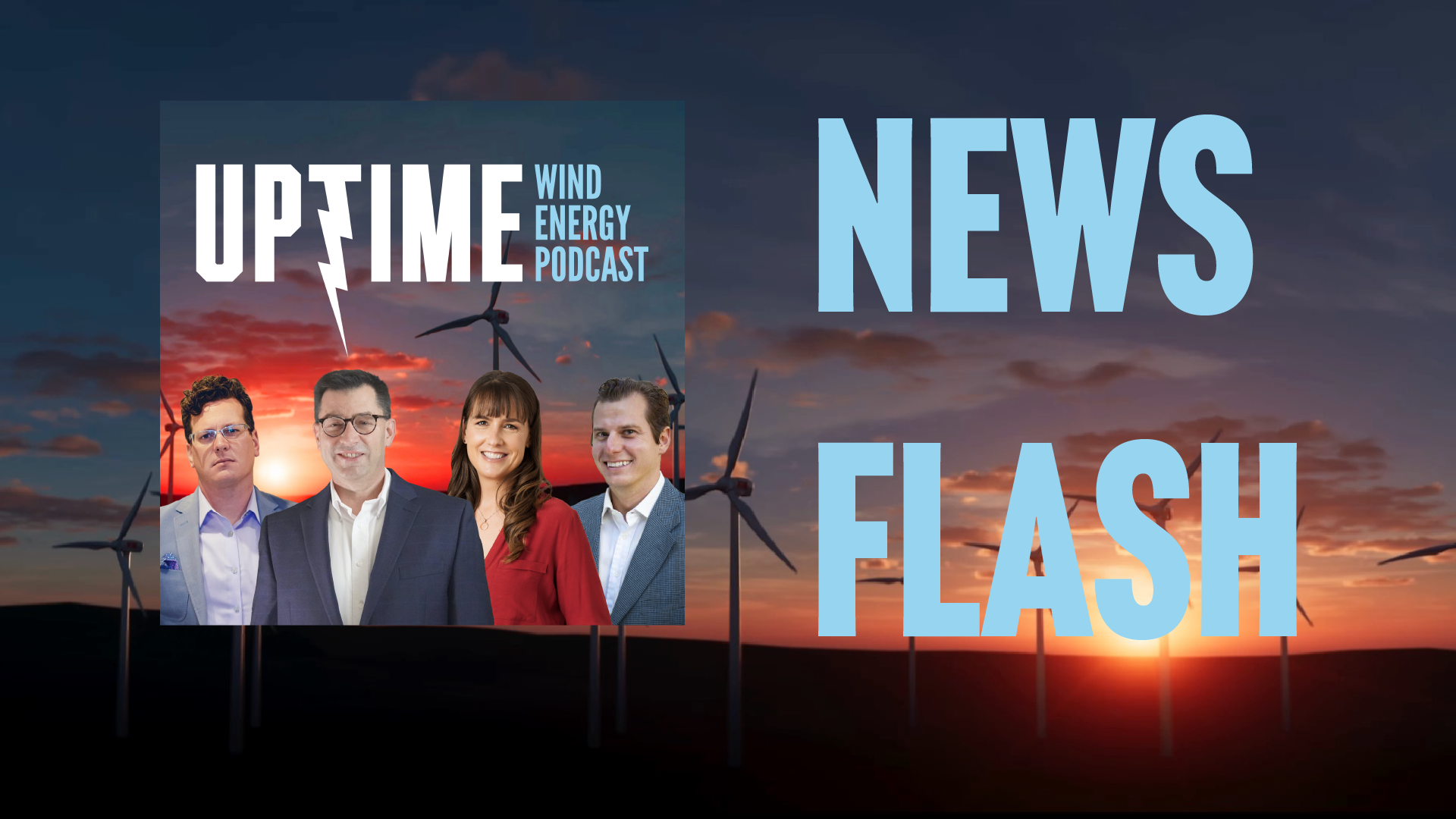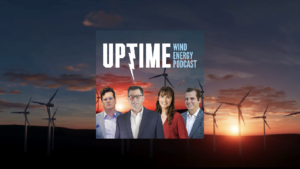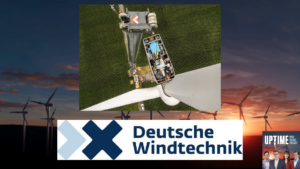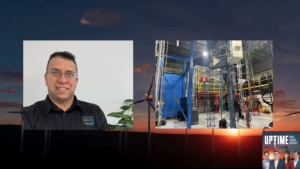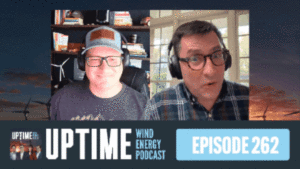Podcast: Play in new window | Download
Octopus Energy invests in Ocergy’s floating offshore wind foundations, Timken’s wind energy revenue declines due to China’s shift toward domestic suppliers, Ireland has a €100 billion plan for 37 GW of offshore wind by 2050, and Orsted exits the French market.
Sign up now for Uptime Tech News, our weekly email update on all things wind technology. This episode is sponsored by Weather Guard Lightning Tech. Learn more about Weather Guard’s StrikeTape Wind Turbine LPS retrofit. Follow the show on Facebook, YouTube, Twitter, Linkedin and visit Weather Guard on the web. And subscribe to Rosemary Barnes’ YouTube channel here. Have a question we can answer on the show? Email us!
Pardalote Consulting – https://www.pardaloteconsulting.com
Weather Guard Lightning Tech – www.weatherguardwind.com
Intelstor – https://www.intelstor.com
Allen Hall: I’m Allen Hall, president of Weather Guard Lightning Tech, and I’m here with founder and CEO of IntelStor, Phil Totaro, and the chief commercial officer of Weather Guard, Joel Saxum. And this is your NewsFlash. NewsFlash is brought to you by our friends at IntelStor. If you want market intelligence that generates revenue, call us today, then book a demonstration of Interstore at interstore. com.
Renewable energy provider, Octopus Energy has announced a strategic investment in California based floating offshore wind company, Ocergy. Ocergy designs and manufactures lighter modular floating. Foundations for wind turbines aiming to reduce the time and cost of building offshore wind farms.
The investment, which is estimated between eight and 24 million pounds will help commercialize Ocergy’s technology and fuel the company’s expansion into new markets, including the U S, UK, France, Norway, Italy, Japan, and South Korea. Now, Phil, California offshore. It’s going to be almost all floating, has to be.
Does this make sense for Octopus to get in early and to basically choose a winner for a floating platform to move California offshore ahead quickly?
Philip Totaro: Yeah, this is interesting because, there are a number of companies out there with a number of floating platform designs. So that said, with the scale that Octopus Group brings in general to any investments particularly those of subsidiary, Octopus Energy you just rattled off all the countries that they want to be able to go develop projects in.
Most prominently, though, is Octopus has already co invested in some of the projects in the UK and Scotland, where they’re gonna be building a ton of, it’s I forget how much, it’s 8 or 9 gigawatts of floating offshore in the next 10 years. Five, six years and then there’s gonna be more, more to come in that market alone.
Plus all these other ones you mentioned again. So this is, I wouldn’t necessarily characterize it as they picked a winner. I think they’re, placing one bet on one company and they’re gonna see how it goes and. They are the type to be a little bit pragmatic and they’ll want to potentially spread it around a little.
But this looks like a promising enough technology that you know, given a lot of the lessons learned from. All the early stage prototypes I think this company is Ostergy is well positioned to be able to scale this technology up.
Joel Saxum: Yeah, when you look at the Ocergy technology, it’s fairly simple.
It’s not a high risk technology either. It’s something that’s been developed. It’s been used in oil and gas for a long time. It’s just a. Basically a triangle floater and that’s all it is. So they’re not taking a wild flyer on something here that hasn’t been done. I think the next legitimate investment here or partnering would be make sure that you have a good mooring company as a partner in going to these floating offshore wind farms, because that’s something we haven’t had to do with fixed bottom offshore wind. But it’s going to be a problem for floaters.
Allen Hall: Timken company, a global leader in engineered bearings and power transmission products reported mixed financial results for the first quarter of 2024, the company experienced a 9 percent organic revenue decline, primarily due to significant downturn in China’s wind energy sector.
Now, Timken has a strong EBITDA margins at 20. 7%, which is fantastic, and adjusted earnings per share of 1. 77. But it is highlighting some issues with the changing market conditions. And I always say, if you want to know the health of the company, look at their suppliers. And Timken is a big supplier of bearings and moving components.
In wind turbines, if they’re seeing a 9 percent organic decline, and that’s focused on China What does that mean, Phil?
Philip Totaro: You gotta take a look at the number of factories that have been opened in China to do things like bearing development and integration into, drivetrains and the overall nacelle design.
Basically, what’s been happening is the Chinese, with all this push onshore wind and offshore wind towards bigger turbine sizes, they’ve been importing a lot of Western developed technology, including bearings from Timken, or having Timken, come over and domestically produce in a Chinese factory.
What’s happening now is a lot of the domestic Chinese bearing manufacturing companies have now gotten some, government investment or grants or subsidies, etc., to be able to go and build their own factories to, to have these bearings for the, six, seven, eight, nine, ten, megawatt onshore turbines and the, up to 18 to 20 megawatt offshore turbines.
So they’re trying to be less dependent on western companies at this point. So that’s basically what that boils down to. The problem and challenge for Timken is That they’re going to be intrinsically tied to growth in Western markets now if the Chinese companies are going to start moving away from sourcing components from Western companies.
Allen Hall: The Irish government has approved a 100 billion euro strategy to scale up offshore wind energy after 2030. The feature framework for offshore renewable energy report sets out. A policy pathway for Ireland to deliver 20 gigawatts of offshore wind by 2040, and at least 37 gigawatts by 2050. The strategy aims to de risk the market for developers and provide critical support through the state investments in port development and power grid strengthening.
As you look towards Ireland, they’re planning a head Phil. This is something that America should think about.
Philip Totaro: Yeah, we could learn a lot of lessons.
But look the Irish have been wanting ever since, our globe bank one. Got built. They’ve wanted to be able to exploit their offshore wind resource, which is tremendous.
There are already a number of projects in the development pipeline that are going to give them something like. I think six to eight gigawatts here by about, 2030. These targets that they’ve set it’s fairly ambitious and, a hundred billion Euro investment is going to help them facilitate a lot of the things that need to happen in terms of infrastructure et cetera, that they’re going to need to build.
do to facilitate this this kind of build up and this kind of build out and scale up.
Joel Saxum: When I was at Bilbao, I ran into Carrie Muldoon from the Northern Ireland Maritime and Offshore Cluster, called the NIMO Cluster. She introduced me to quite a few people from Ireland there that are really trying to You know, put their collective eggs in the basket and put all their efforts towards getting more offshore wind in Ireland.
So you have a whole group of people, of course, you’re going to have those clusters and stuff, but you have a whole group of people in the country behind making this happen. And I guess in my Experience and Allen, maybe you can mirror this. The Irish can get some stuff done.
Allen Hall: Historically they have for sure.
And the planning on Ireland’s part is amazing. I think this is fantastic. And a lot of countries should follow it. Danish renewable energy developer, Orsted has announced its exit from the French market with the sale of its. Ostwind France business to Engie, of all companies. The transaction, which is expected to close in the second quarter of 2024 includes Ostwind International, Ostwind Engineering and its onshore wind and solar units in France.
Olmsted’s decision to sell Ostwind France aligns with its updated business plan which emphasizes concentrating efforts on the UK, Ireland, Germany, and Spain markets for off onshore wind development and solar in Europe. up. Phil, Orsted is reorganizing, is going to be stronger than ever, this is a really unique step by them to concentrate on specific areas, I think it’s a smart move.
Philip Totaro: Yeah it’s interesting though because they just bought into Ostwind, normally, What, three, four years ago, I want to say and now divesting it again. But it’s necessary in the current kind of climate and the context of, what’s going on in their global business. The real challenge though, in France at this point and the challenge for them certainly has been a lot to do with the permitting timelines and the amount of project pipeline that, France has an offshore.
They’ve already got close to 10, 000 turbines installed. There’s, a portion of that installed base that’s aging and, is going to need some repowering. There will be opportunities in France, but it’s going to be, a little too finite for Orsted who would obviously rather focus on what they consider to be more lucrative markets.
A responsible and pragmatic move from them. And, at the end of the day, certainly a good thing for Engie to be able to, continue adding to their coffers.



